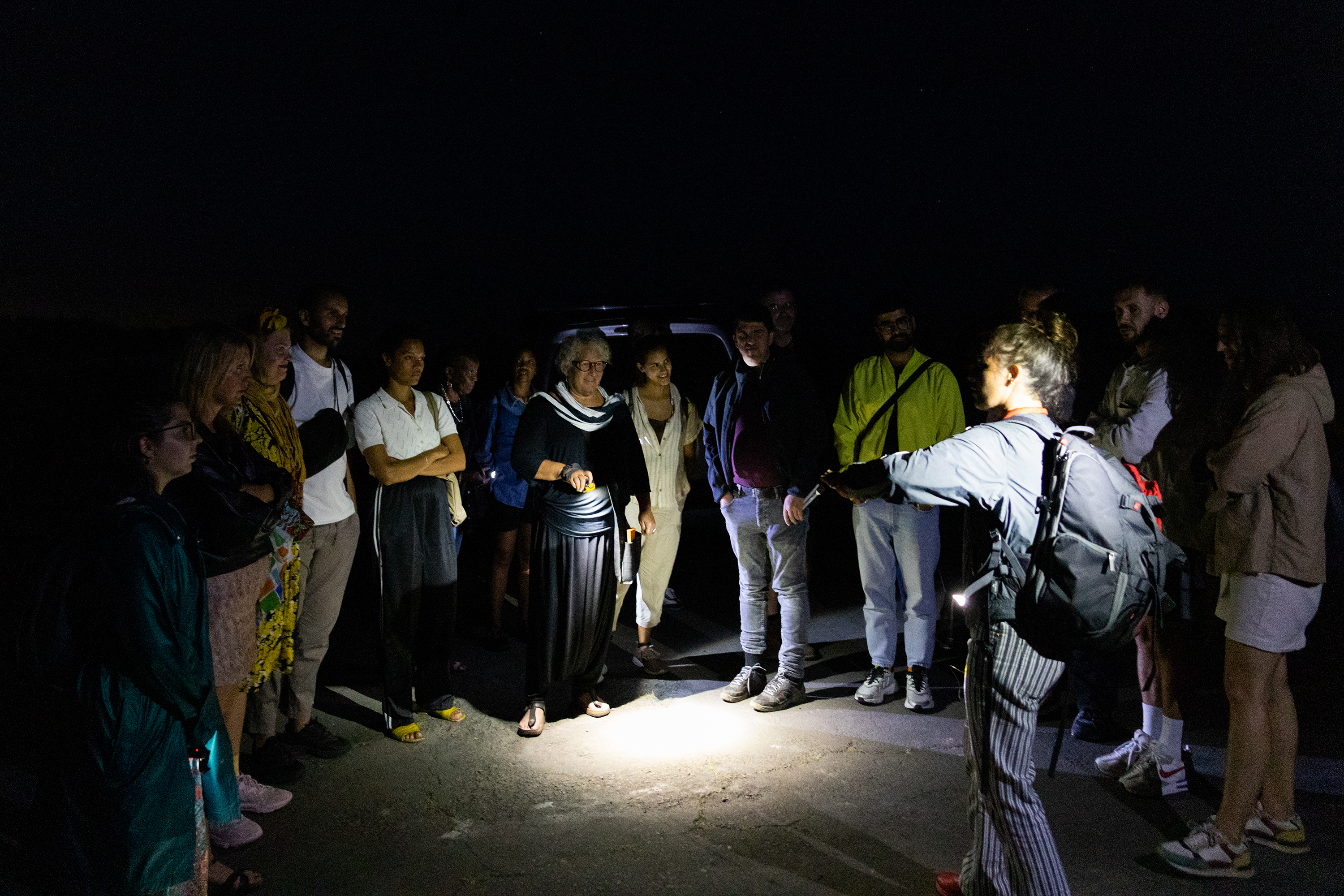


Cagarros Listening Assembly, 2022
Performance + listening session
4 nights, Rocha de Relva, São Miguel, Açores
with ACAPO (Portuguese association of the blind and visually impaired) & SPEA (Portuguese society for the study of birds)
Timed to begin with the noisy nighttime arrival of the adult cagarros.
For these site-specific performances used the compositions and sonic meditations of composer Pauline Oliveros, who theorized the concept of ’deep listening’ as an approach (and an aesthetic) to inspire trained and untrained ‘performers’ to practice the art of listening while responding to environmental conditions. Building on Oliveros’ approach, I designed and led four listening sessions that were performed as part of the Walk and Talk Festival. These sessions took place in the evening, after dusk, at an accessible cliff- top breeding ground of Cory’s shearwater. Each session included a scientist, who I invited to introduce the birds and answer questions from participants (the audience). The sessions were also designed in coordination with ACAPO (The Portuguese Association for the Blind & Visually Impaired), whose president and visually-impaired members attended, both as participants and contributors.
Everyone in the audience is given a card. The cards are tactile. Each card represents an aspect deep listening and the cagarro’s life cycle.
For each card, the audience is asked to do a listening exercise interspersed with interviews with the president of ACAPO and a marine biologist from SPEA.
The 6 cards:
The Ear. Rectangular card with one corned folded down card. Represents listening. Audience listens to one sound in the landscape. How do the visually impaired use focal listening in everyday life?
The Cave. Six sided card. Represents, in the first place, the name of this year’s edition of Walk & Talk. In the first place, there were the cagarros. What is the function of the cave for the cagarro? Audience is asked to listening for multiple sounds, pay attention to where they are coming from.
The Light. A card with a jagged middle. Represents danger. What is the most dangerous aspect for the young cagarro leaving the nest. Audience members holding the Light card are asked to describe a sound in words.
The Raft. Rectangular car with six holes connected by string. The communication card. Cagarros assemble on the sea surface in ‘rafts’ in order to communicate. What are some challenges communicating with sighted people?
The Edge. Rectangular card with a wavy edge. Represents the furthest journey. Audience is asked to imagine a sound beyond the edge of their hearing. I ask the marine biologist what’s the edge of her knowledge at the moment, something she wished she could know about the cagarro.
The Sounding. Rectangular card with a hole in opposite corners. It’s the survival card—vocalization is how birds find a mate, ensuring the survival of the species. Listen to difference between male and female cagarro calls. Audience is asked to imitate the birds.
The Ear. Return to the first card. At the beginning of the performance the ear card represented listening, now it represents empathy. I ask ACAPO and SPEA what they would like to communicate to the audience, so that we don’t misunderstand their missions.